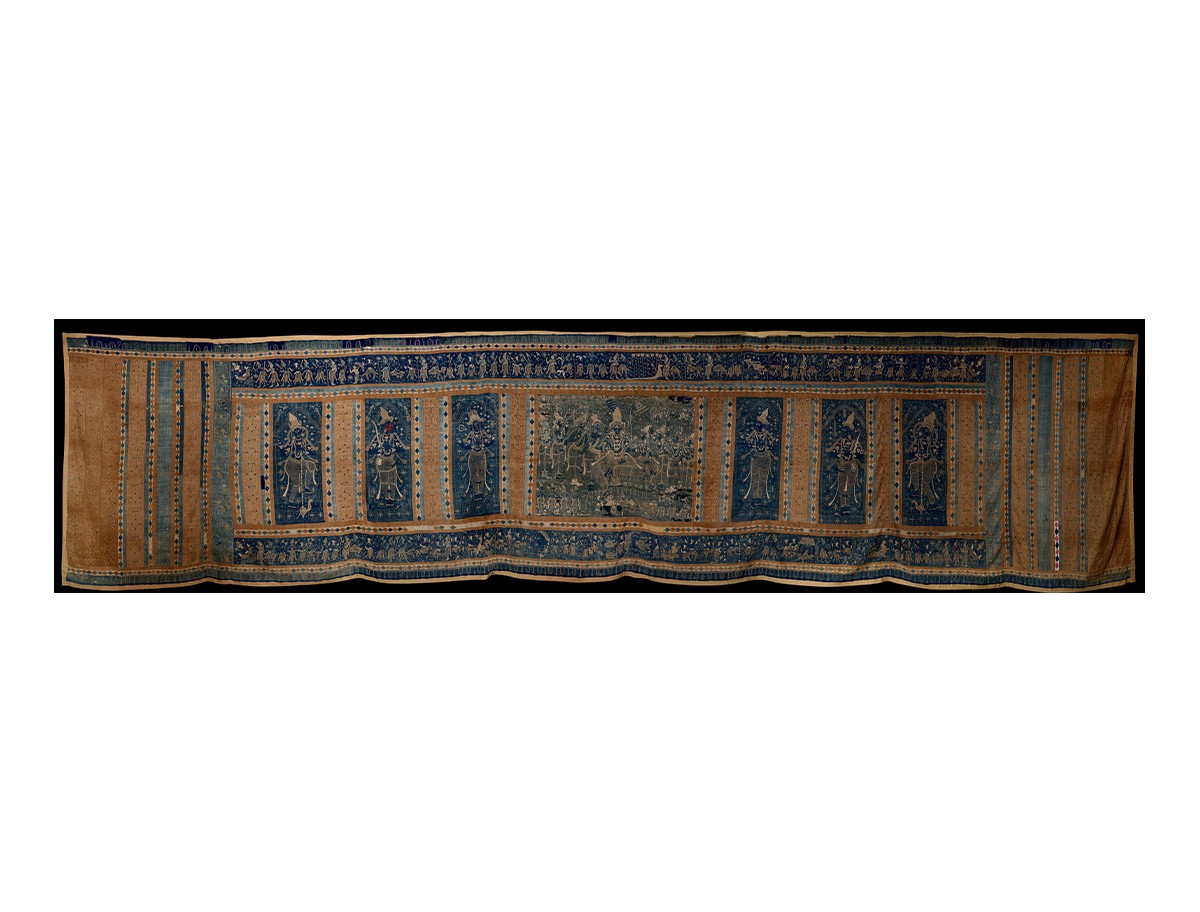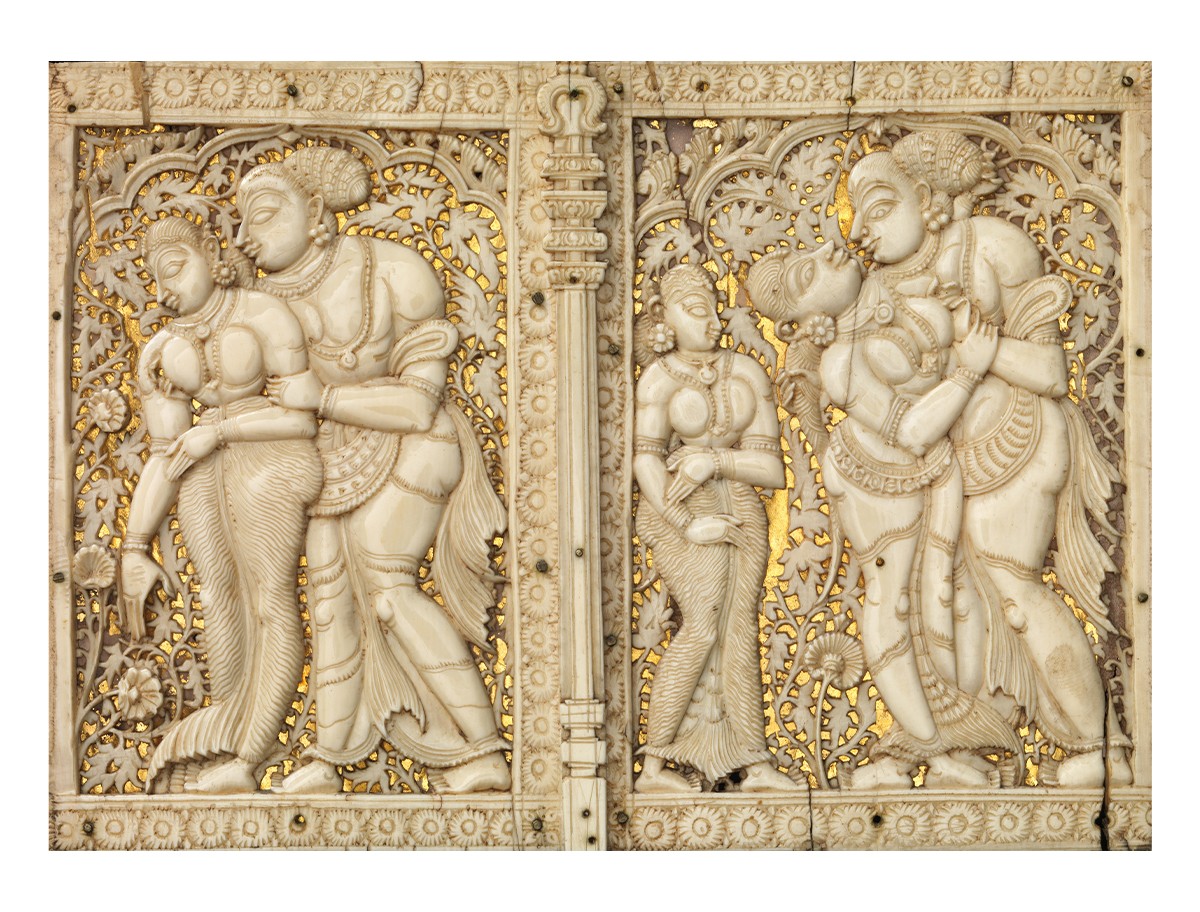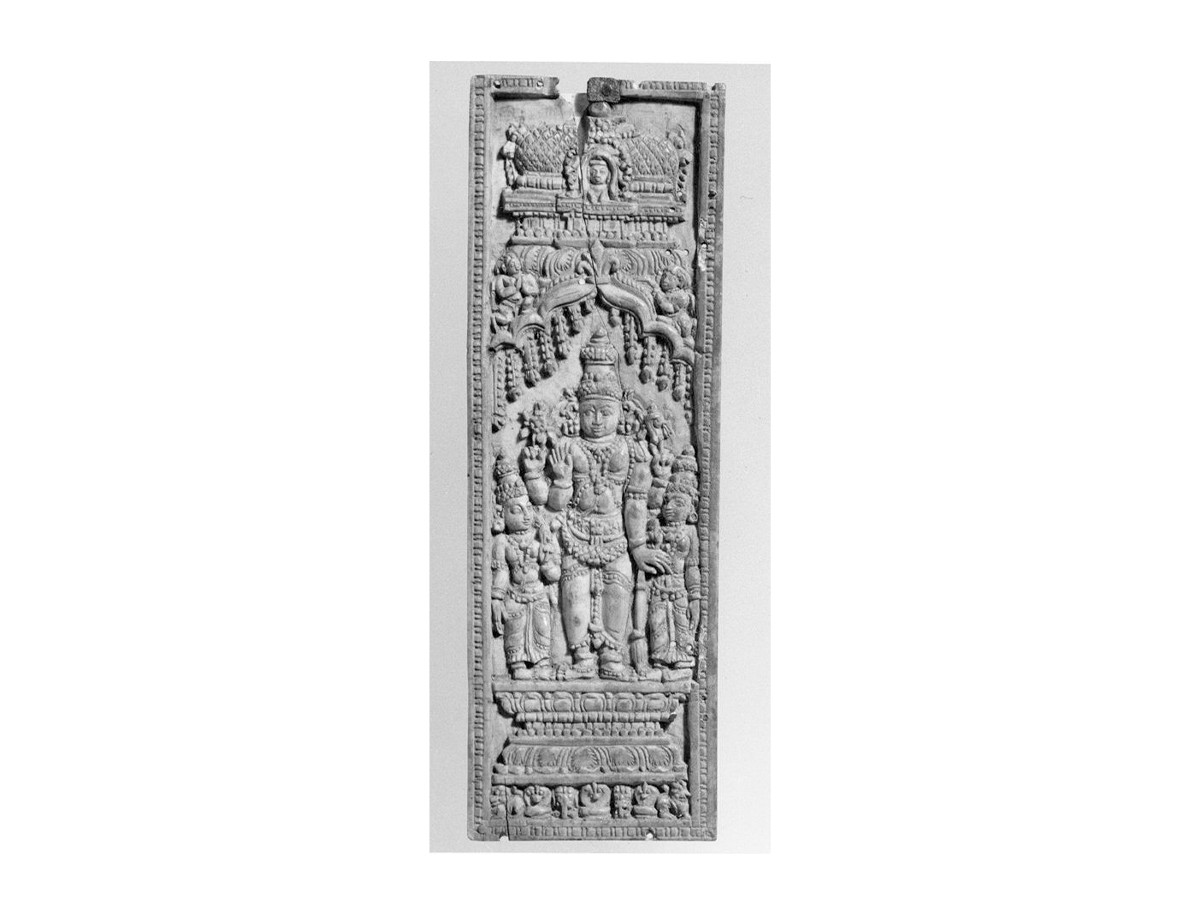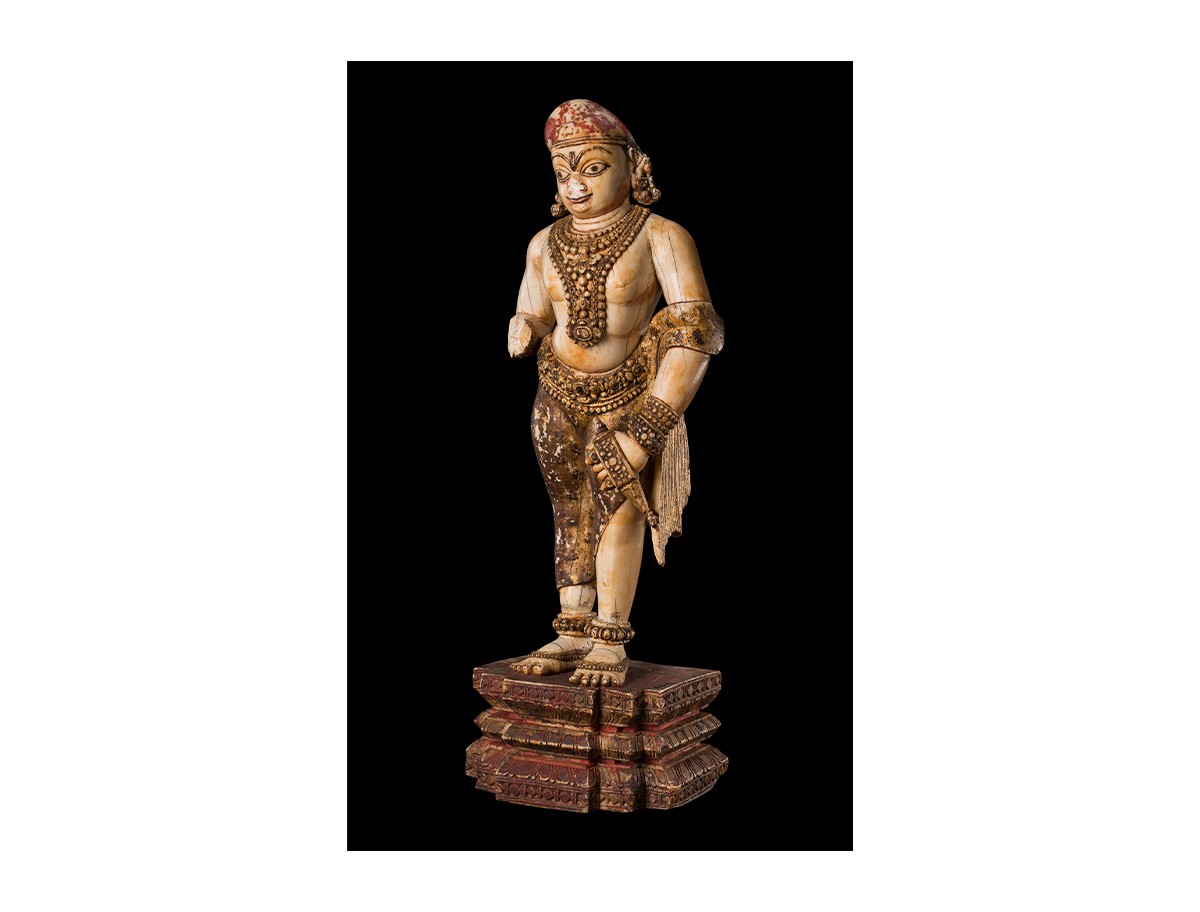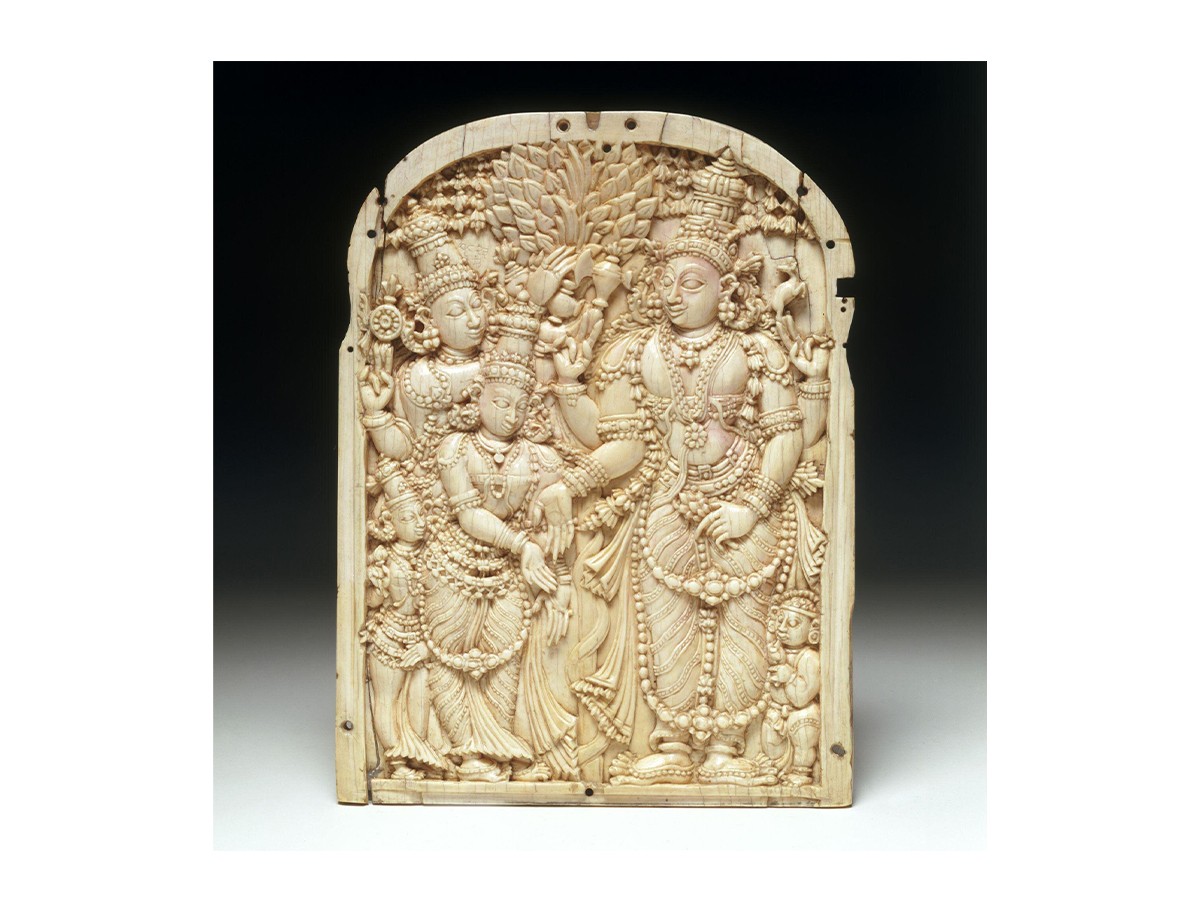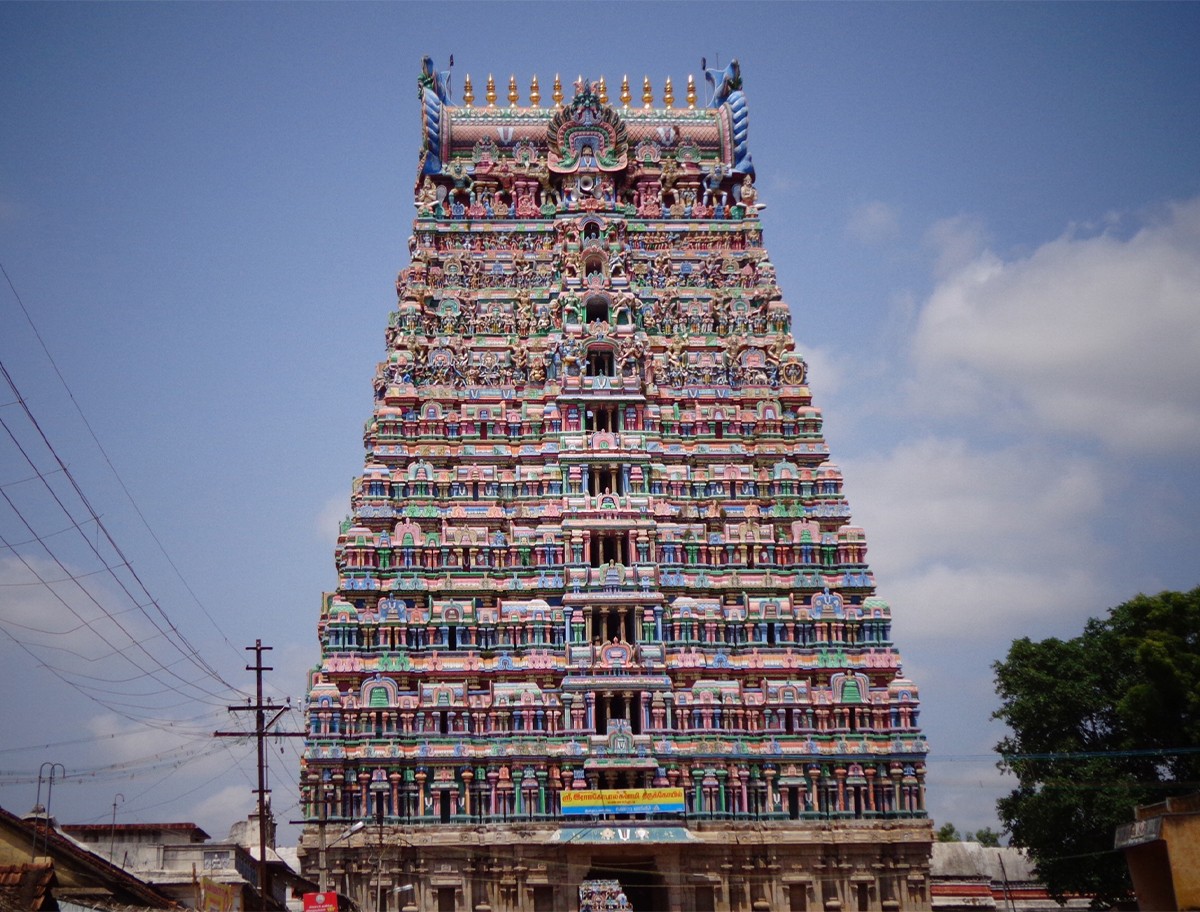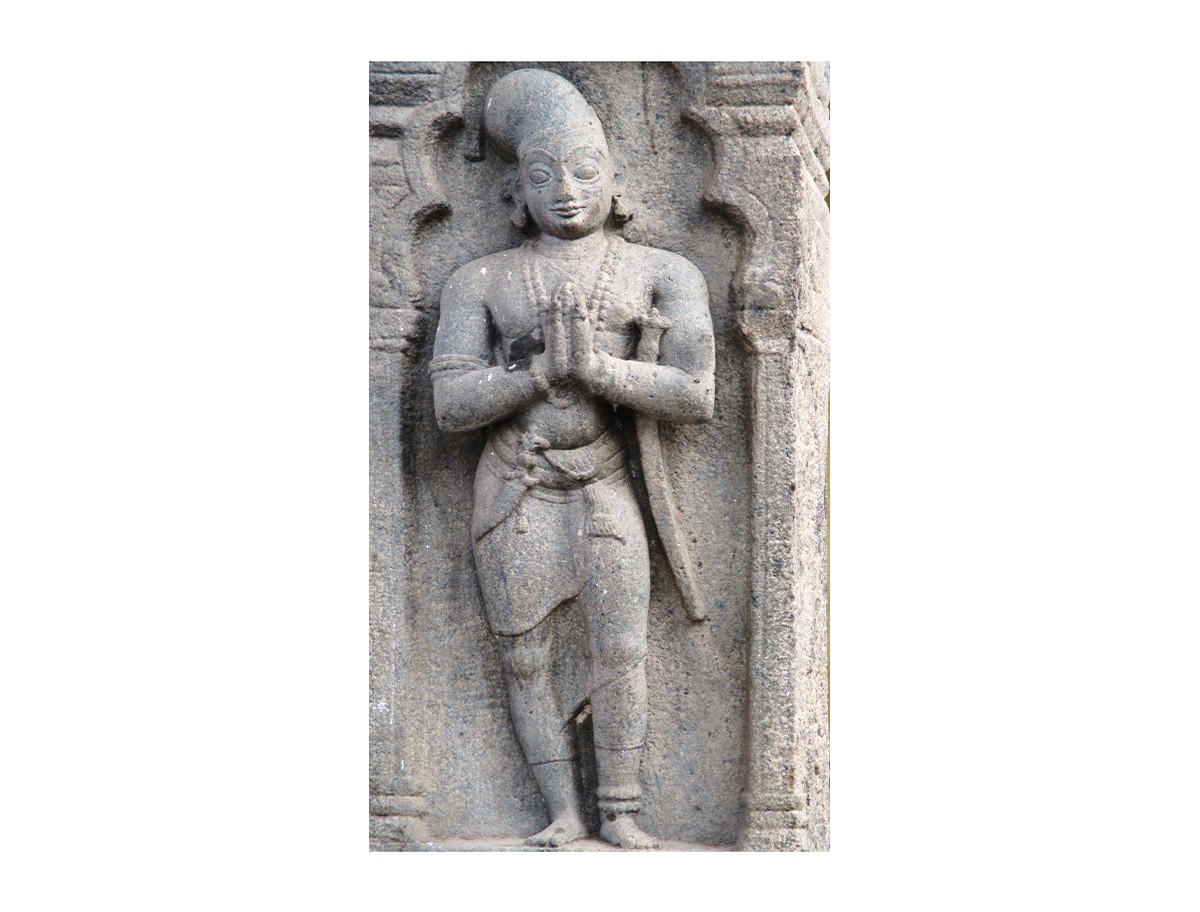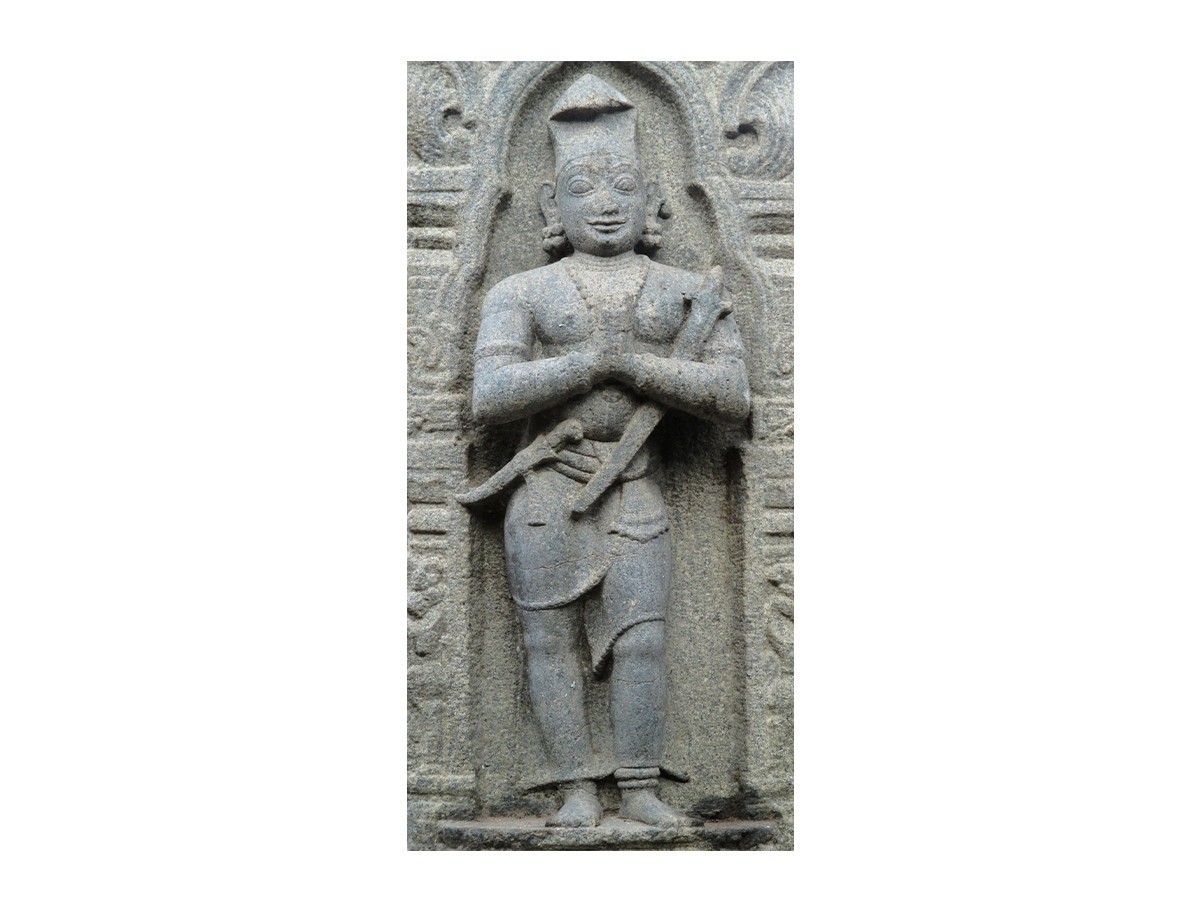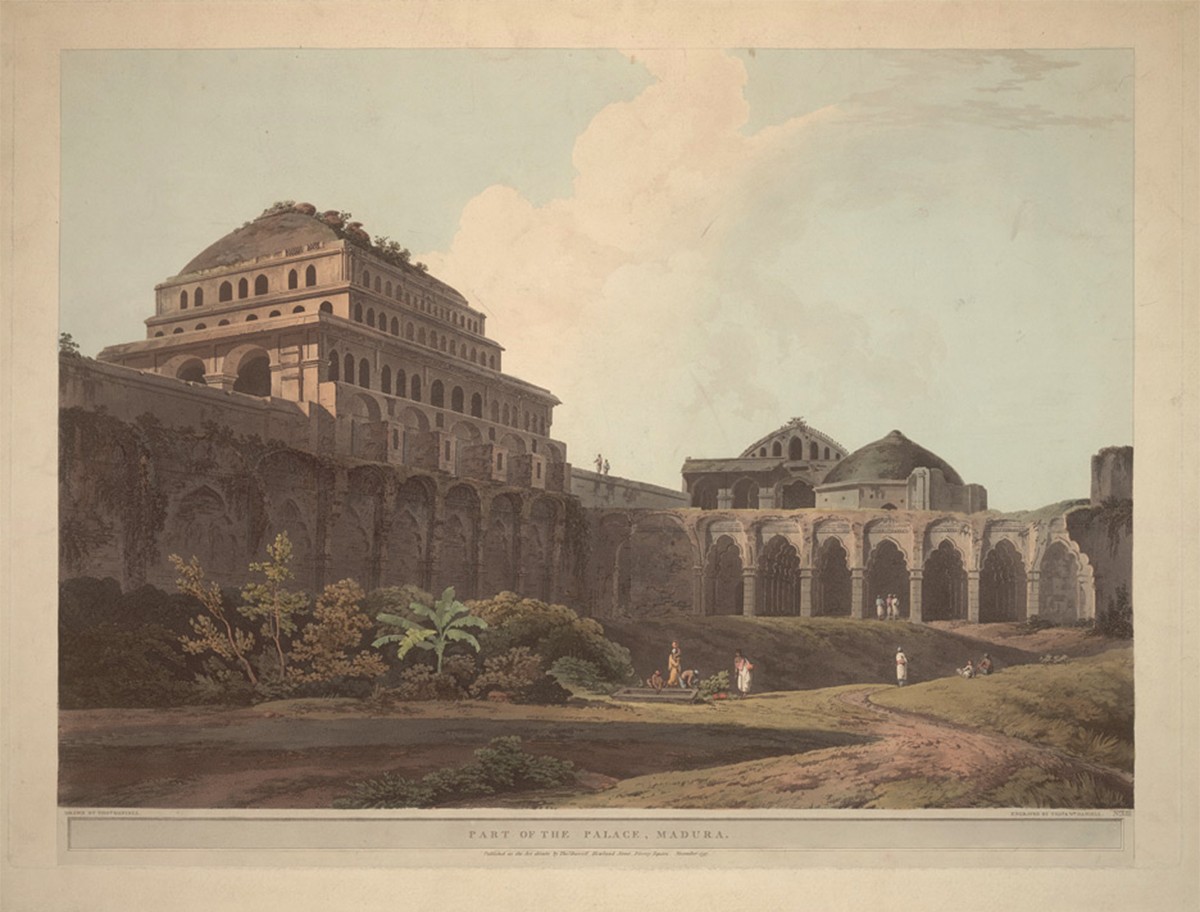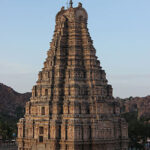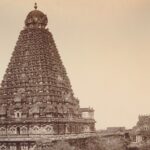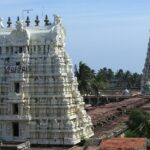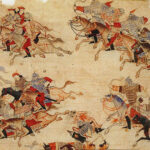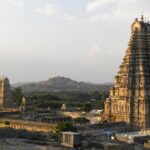Regional Art and Architecture after the Fall of Vijayanagara
1550–1650
The newly independent Nayaka kingdoms in Tamil Nadu and southern Karnataka continue to patronise art and architecture that augments the imperial Vijayanagara style with local traditions. Significant among these kingdoms are the Wadiyars of Mysore and the Nayakas of Madurai and Thanjavur. Local living traditions see a significant increase in patronage, such as the Bhagavata Mela in Thanjavur.
Apart from palace and fort building, much of the architectural work undertaken in these kingdoms involves rebuilding or expanding existing temples, most notably the Meenakshi Temple in Madurai and the Rajagopalaswamy Temple in Mannargudi. In particular, rajagopurams (monumental gateway towers) — already introduced as grand structures under the Chola and Pandya kings centuries ago — are added to various major temples by local kings. Existing gopurams are increased in height.
By this time, the popularity of bhakti philosophy, the existence of influential Puranas and local legends, and the compilation of lists of sacred sites has made pilgrimage an important aspect of religious practice. Temples at Chidambaram, Madurai and other cities have already become important pilgrimage destinations but are architecturally modest. After the fall of Vijayanagara in 1565, governors of these regions become sovereign kings, with a vested interest in ensuring that the sacred sites under their purview look as grand as possible; sculptural portraits of these Nayakas, often in elements of Persianate costume, are included in the temples to signal their devotion and patronage to visiting pilgrims.
Bibliography
Dirks, Nicholas B. The Hollow Crown: Ethnohistory of an Indian Kingdom. New York: Cambridge University Press, 1988.
Eaton, Richard M. A Social History of the Deccan, 1300–1761 Eight Indian Lives. New York: Cambridge University Press, 2005.
Harle, J. C. The Art and Architecture of the Indian Subcontinent. New Haven: Yale University Press, 1994.
Feedback 
This entry appears in
Art in South Asia
Visit Timeline
Associated Timeline Events
First Published: March 11, 2024
Last Updated: August 5, 2024



